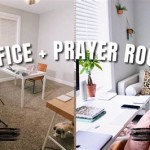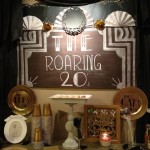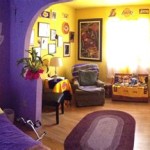Wall Decoration With Colour Paper: A Comprehensive Guide
Wall decoration is an integral aspect of interior design, significantly influencing the ambiance and aesthetic appeal of any space. While various materials and techniques exist for adorning walls, the use of colour paper presents a cost-effective, versatile, and creatively stimulating option. This article will explore the multifaceted applications of colour paper in wall decoration, providing insights into different techniques, design considerations, and practical tips for achieving visually appealing and personalized results.
Colour paper, in its simplest form, refers to paper that has been dyed or printed with a specific colour. It is available in a wide range of hues, textures, and weights, making it suitable for a diverse array of decorative projects. Its affordability and ease of manipulation compared to traditional wall coverings like paint or wallpaper make it an accessible option for both seasoned DIY enthusiasts and novice decorators. Moreover, the ephemeral nature of paper allows for frequent and relatively inexpensive alterations to wall decor, catering to evolving tastes and seasonal trends.
Understanding the Properties of Colour Paper
Before embarking on any wall decoration project using colour paper, it is crucial to understand its fundamental properties. The weight of the paper, typically measured in grams per square meter (gsm), determines its thickness and durability. Lighter weight papers are ideal for intricate designs requiring folding or layering, while heavier weight papers are better suited for applications requiring structural integrity, such as creating three-dimensional wall panels or textured surfaces. The texture of the paper also plays a significant role in the overall aesthetic. Smooth papers offer a clean and contemporary look, while textured papers, such as those with embossed patterns or a handmade feel, add depth and visual interest.
The colour of the paper is, of course, paramount. Colour theory should be considered when selecting colours for wall decoration. Warm colours, such as reds, oranges, and yellows, tend to create a sense of energy and intimacy, making them suitable for social spaces like living rooms or dining areas. Cool colours, such as blues, greens, and purples, evoke a sense of calm and serenity, making them ideal for bedrooms or bathrooms. Neutral colours, such as whites, grays, and beiges, provide a versatile backdrop that complements a wide range of design styles. Furthermore, the saturation and brightness of the colour should be carefully considered. Highly saturated colours can be visually stimulating but may become overwhelming in large doses, while muted tones offer a more subtle and sophisticated aesthetic.
The paper's opacity is another important factor. Opaque papers completely block light, providing a solid colour backdrop. Translucent papers, on the other hand, allow light to pass through, creating a layered effect when used in conjunction with other materials or light sources. This can be particularly effective for creating illuminated wall panels or decorative screens.
Techniques for Wall Decoration with Colour Paper
Several techniques can be employed to transform colour paper into stunning wall decorations. These techniques range from simple applications like creating geometric patterns to more complex methods involving origami, paper quilling, and decoupage.
Geometric Patterns:
One of the simplest and most effective ways to utilize colour paper for wall decoration is to create geometric patterns. This involves cutting the paper into various shapes, such as squares, triangles, or circles, and arranging them in a repeating or randomized pattern on the wall. The use of contrasting colours can enhance the visual impact of the design. For example, alternating squares of black and white paper can create a striking checkerboard effect. The geometric shapes can be adhered directly to the wall using adhesive tape or wallpaper paste, or they can be mounted onto a backing board for a more durable and portable installation.Origami and Paper Quilling:
For those seeking a more intricate and three-dimensional effect, origami and paper quilling offer excellent options. Origami involves folding paper into various shapes, such as flowers, animals, or geometric forms. These folded creations can then be affixed to the wall to create a sculptural wall mural. Paper quilling, on the other hand, involves rolling and shaping strips of paper into various decorative elements, which can then be glued onto a surface to create intricate designs. Both origami and paper quilling require a degree of patience and skill, but the resulting wall decorations are undeniably unique and eye-catching.Decoupage:
Decoupage is a technique that involves gluing paper cutouts onto a surface and then sealing them with multiple coats of varnish. This technique can be used to create a variety of effects, from replicating the look of antique wallpaper to creating personalized collages. Colour paper can be used as the primary material for the cutouts, or it can be combined with other materials, such as fabric scraps, photographs, or magazine clippings, to create a more eclectic and textured design. Decoupage is a relatively forgiving technique, making it suitable for beginners. However, achieving a smooth and professional finish requires careful attention to detail and the use of high-quality varnishes.Paper Flowers and Garlands:
Creating paper flowers and garlands is another popular way to adorn walls with colour paper. Paper flowers can be made in a wide variety of styles, from simple and stylized to intricate and realistic. They can be glued directly to the wall, arranged in vases or planters, or strung together to create garlands. Paper garlands can also be made from other shapes, such as hearts, stars, or circles. These garlands can be draped across the wall or hung from the ceiling to add a festive and whimsical touch to any room.Design Considerations and Practical Tips
When decorating walls with colour paper, several design considerations should be taken into account to ensure a cohesive and aesthetically pleasing result. The scale of the design should be appropriate for the size of the wall. Large-scale patterns or murals can be effective in larger rooms, while smaller, more delicate designs are better suited for smaller spaces. The colour palette should also be carefully considered, taking into account the existing colours in the room and the desired mood or atmosphere. It is generally advisable to limit the number of colours used in a single design to avoid creating a cluttered or overwhelming effect. The texture of the paper should also be considered in relation to the other textures in the room. Combining different textures can add visual interest and depth, but it is important to ensure that the textures complement each other rather than clash.
Before starting any wall decoration project, it is essential to properly prepare the surface of the wall. This typically involves cleaning the wall to remove any dirt, dust, or grease. Any holes or imperfections in the wall should be filled with spackle and sanded smooth. If the wall has been painted recently, it is advisable to wait at least a week before applying any adhesive to allow the paint to fully cure. When applying adhesive, it is important to use a high-quality adhesive that is specifically designed for use with paper. Wallpaper paste is a good option for larger projects, while adhesive tape or glue sticks can be used for smaller, more delicate designs. It is also important to apply the adhesive evenly to avoid creating bubbles or wrinkles in the paper.
When cutting colour paper, it is advisable to use a sharp craft knife or scissors to ensure clean and precise cuts. A self-healing cutting mat can also be helpful for protecting the work surface. When folding paper for origami or paper quilling, it is important to make crisp and accurate folds to ensure that the finished product has a professional look. Using a bone folder can help to create sharp creases and folds.
The Advantages of Using Colour Paper for Wall Decoration
The appeal of using colour paper for wall decoration extends beyond its aesthetic possibilities. It offers several practical advantages that make it a compelling alternative to more traditional wall covering options. One of the most significant advantages is its affordability. Colour paper is significantly less expensive than paint or wallpaper, making it an accessible option for budget-conscious decorators. Moreover, the ease of installation and removal reduces the need for professional assistance, further minimizing costs.
Another advantage of colour paper is its versatility. It can be used to create a wide range of designs, from simple geometric patterns to intricate three-dimensional murals. The availability of colour paper in a vast array of colours, textures, and weights allows for endless creative possibilities. Furthermore, colour paper is a relatively sustainable material, particularly when sourced from recycled or sustainably managed forests. It is also biodegradable, making it an environmentally friendly choice for wall decoration.
Finally, colour paper offers the flexibility to easily change wall decor. Unlike paint or wallpaper, which can be time-consuming and expensive to remove, colour paper can be easily removed and replaced, allowing for frequent and inexpensive alterations to wall decor. This makes it an ideal option for those who enjoy experimenting with different styles or for those who want to update their decor to reflect seasonal trends or personal preferences.

Diy Wall Decoration Ideas Color Paper Hanging Arts And Craft Using Decorations Decor

Beautiful Wall Decor Idea Hanging Craft Ideas Diy Paper Easy Room Decoration Youtub Crafts Flower

Paper Craft Wall Decor Hanging Ideas Easy Home Id Flowers Diy Crafts

Wall Hanging Craft Idea Decoration With Colour Paper By Tasonya Steemit

How To Make A Colorful Fall Feather Wall Hanging Colorize Your Life Astrobrights

Wall Hanging Craft Ideas For Decorating Your Home

Paper Wall Hanging Ideas Craft In 2025

Wall Art By Colour Papers Indrarathna උඩරට Com Udarata

Cool Diy Wall Art Of Colored Paper Shelterness

20 Extraordinary Smart Diy Paper Wall Decor Free Template Included Origami Hanging
Related Posts







